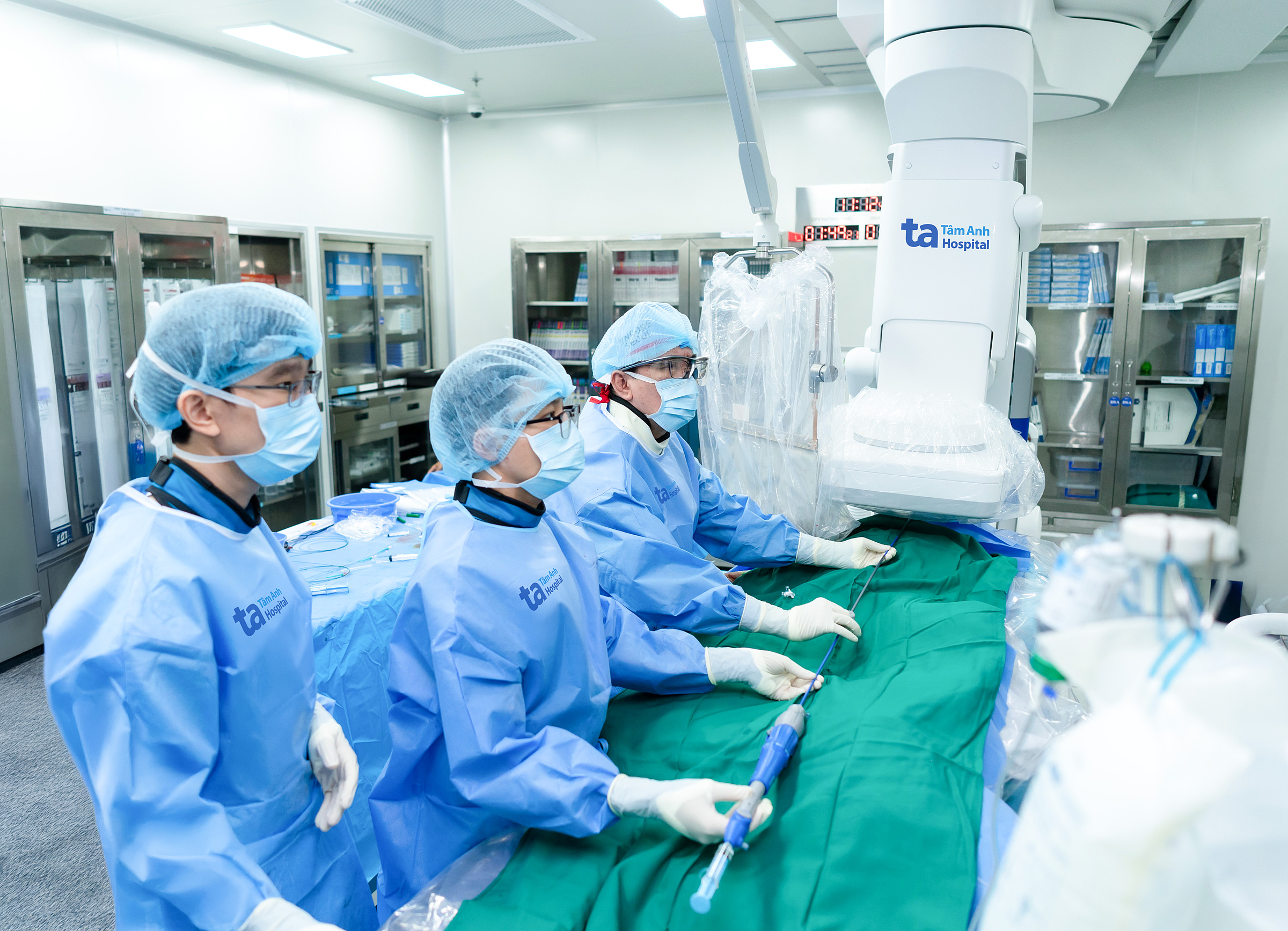The heart has 4 valves: mitral, tricuspid, aortic, and pulmonary. They separate the atria from the ventricles, and the ventricles from the aorta and pulmonary artery. These valves open and close sequentially, ensuring one-way blood flow and maintaining proper circulation.
According to Dr. Pham Do Anh Thu, Head of the Heart Valve Unit at Tam Anh General Hospital's Cardiovascular Center in TP HCM, common valve diseases include stenosis (particularly of the mitral and aortic valves) and regurgitation (affecting the mitral and aortic valves). Some cases involve both stenosis and regurgitation in one or multiple valves. Stenosis restricts blood flow, causing upstream congestion and downstream deficiency, leading to heart chamber enlargement and heart failure. Regurgitation causes backflow, forcing the heart to work harder, eventually leading to irreversible heart chamber enlargement and heart failure.
Two valve replacement methods exist: surgical and transcatheter. Surgery is applicable to all stenosis or regurgitation cases involving the mitral, tricuspid, aortic, or pulmonary valves. Most patients experience significant health improvements after surgery. Recovery varies, but most resume normal activities within 6-8 weeks.
Transcatheter aortic valve replacement (TAVR) is a minimally invasive procedure to replace the aortic valve via a small catheter inserted through the skin, eliminating the need for open-heart surgery. Patients receive local anesthesia, and a catheter is threaded through the femoral artery to the narrowed aortic valve. Using digital imaging, the new valve is precisely positioned, deployed, and begins functioning.
Dr. Thu notes that TAVR avoids sawing the sternum, using a heart-lung machine, and general anesthesia, thus reducing complications. The procedure only requires a small incision (6-8 mm), minimizing blood loss, pain, and hospital stays (2-3 days), leading to faster recovery.
 |
Doctors perform transcatheter aortic valve replacement (TAVR) on a patient. Photo: Thanh Luan |
Doctors perform transcatheter aortic valve replacement (TAVR) on a patient. Photo: Thanh Luan
Dr. Thu cautions that every procedure has risks. Valve replacement, whether surgical or transcatheter, carries potential complications: endocarditis, bleeding from anticoagulant overdose, valve thrombosis, stroke, heart attack, restenosis, prosthetic valve regurgitation, aortic dissection, thromboembolism, and post-operative heart failure. Post-replacement, patients must adhere to medical advice, maintain a heart-healthy diet, exercise lightly for at least 30 minutes daily, reduce stress, and sleep 7-8 hours nightly. Follow-up appointments are crucial, and patients should seek immediate medical attention for symptoms like chest pain, coughing, shortness of breath, or arrhythmias.
Thu Ha
| Readers can submit questions about cardiovascular diseases here for doctor's responses. |












